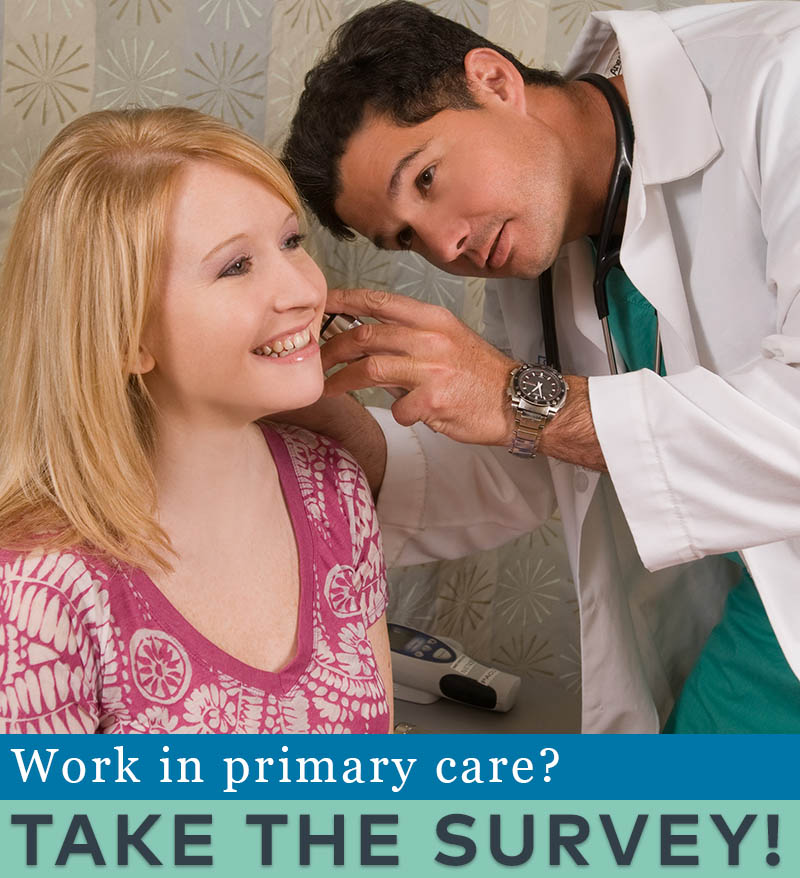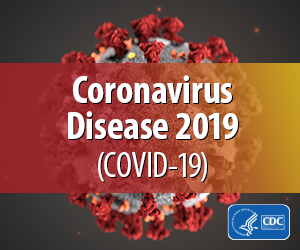Check back regularly for the latest survey results and updates.
For data from the previous survey, see Round 26 Results.
The Primary Care Collaborative is partnering with the Larry A. Green Center to regularly survey primary care clinicians and patients to better understand the impact of COVID-19 in real time.
Who replied to the survey in round 27?
More than 750 primary care clinicians responded to the latest survey (Round 27). Responses came from 48 states, the District of Columbia, and Guam. The highest number of responses came from Virginia and Texas (over 20% of the total combined), with Oregon, Washington state, Colorado, and Massachusetts each representing over 5% of the sample. Physicians continue to represent over three-quarters of responses; nurse practitioners (14%) and PAs (3%) are the next most common certifications, with 6% marking “other.” That majority of respondents (73%) specializes in family medicine, followed by internal medicine (14%), pediatrics (7%), geriatrics (3%) mental/behavioral health (1%), pharmacy (<1%), and other (5%). 16% work in a primary care and academic or residency practice; another 6% work in a convenience care setting such as retail clinic or urgent care; and 5% practice in a direct primary care or membership based setting. About a fifth (22%) of respondents describe their practice as “rural,” and just under a third work in a designated patient-centered primary care home. The size of respondents’ practices varies: 1-3 clinicians (31%); 4-9 clinicians (30%); and 10+ clinicians (39%).
Series 27 of the clinician survey ran March 10-17, 2021. Total responses: 765.
Results at a glance
- Much of primary care is willing to administer COVID-19 vaccines, and half are ready to do so. Three quarters of respondents say they are willing to administer COVID-19 vaccines, and 49% say they are “ready and able” to administer them. Patients also expect primary care practices to play a role: 46% of respondents say patients are calling and demanding to be vaccinated.
- Still, primary care continues to lack reliable sources of the vaccine. Less than 10% of surveyed primary care clinicians report that their practice generally has a reliable vendor for COVID-19 vaccine and that they know when their practice will receive it. State and local coordination with primary care remains lacking: less than a fifth of respondents report that their state has actively engaged primary care to help with vaccination distribution; just over a quarter (27%) say their local health department has engaged primary care.
- Telehealth has benefits for patients and clinicians. Telehealth continues to make up a larger-than-normal share of care during the pandemic, with a fifth of surveyed clinicians using phone or video for at least half of their patient visits. This has its benefits for both patients and clinicians: 45% of respondents say they are motivated to use telehealth because their patients “really like it,” and 67% are motivated to use it to meet patient needs. Nearly a quarter (23%) report that telehealth appointments have significantly reduced their no-show rates.
- Yet primary care remains cautious about telehealth’s downsides. Nearly half (46%) of surveyed clinicians worry about misdiagnoses due to lack of in-person care. And in some cases, telehealth may not be an option for patients: Surveyed clinicians say that at least a fifth of their patients have difficulties accessing telehealth due to lack of computer literacy (57%) and/or lack of broadband (35%).
- Clinicians warn that communities—and primary care practices—are not yet out of the woods on COVID-19. A third of respondents worry that overconfidence in vaccines will cause a spike in COVID-19 infections. And over a quarter (27%) still have clinicians out due to illness or self-quarantine. Nearly a third (30%) say their burnout is at an all-time high. The pandemic’s impact persists even financially: Only 21% say their practice revenue is within 10% of pre-pandemic levels; many more describe their financial state as “fragile.”
- Primary care is playing a public health role, but COVID-19 testing capacity is still not ubiquitous. Nearly half (46%) of those surveyed say their practice added or extended services to patients during the pandemic in order to prevent use of hospital/specialty care; and 67% monitor COVID-19-positive patients to prevent hospital/specialty care. Yet their capacity to respond remains limited: Only 59% have capacity within their practice to test for COVID-19. Others test through their health system, but more than 15% still have no capacity to test for COVID-19 through their practice or health system.
- The pandemic may be spurring a more comprehensive set of services. 72% of surveyed clinicians report their practice has become more involved in mental health support during the pandemic. Social risks are also being increasingly addressed: 30% have increased offers of assistance to patients with financial insecurity, and 27% have increased support for those with food insecurities.
- More primary care clinicians may see value-based payment as a way forward. 32% of respondents believe, based on their experience during the pandemic, that value-based payments should account for the majority of primary care payment; whereas 24% believe the majority should be fee-for-service.
Voice from the Front Lines
“Of all specialties, family medicine has had the highest rate of COVID cases and COVID deaths among physicians. WE have been the hardest-hit and impacted during the pandemic. We need support.” – Family medicine clinician in Illinois
A peer-reviewed publication supports this statement. It found that “general practice/family medicine/primary care” account for 26.9% of physician deaths among 19 specialties reported in the study. Pediatrics (4.7% of deaths) and internal medicine (5.5% of deaths) were calculated separately. See Gouda D, Singh PM, Gouda P, Goudra B. An Overview of Health Care Worker Reported Deaths During the COVID-19 Pandemic. J Am Board Fam Med. 2021 Feb;34(Suppl):S244-246.
Chart couresy of American Board of Family Medicine
Learn more: Download the Round 27 Clinician Survey Executive Summary (includes select open-ended answers to survey questions)
| Attachment | Size |
|---|---|
| 762.59 KB |

Are you a physician, nurse practitioner, or PA working in primary care?
Help PCC and the Larry A. Green Center track how your practice is responding to the COVID-19 outbreak by completing the Green Center's occasional survey.
The regular surveys are no longer being conducted.
COVID-19 Updates
May 9, 2022 | Primary Care Collaborative
April 19, 2022 | Primary Care Collaborative
April 19, 2022 | Primary Care Collaborative
March 7, 2022 | STAT
February 27, 2022
- 1 of 39
- next ›

Recent News
March 19, 2024
February 28, 2024
February 22, 2024 | Conversations on Health Care
May webinar highlights: “The Commercial Market: Alternative Payment Models for Primary Care” Nate Murray explains w… https://t.co/KX9Wi2w6oY —
10 months 1 week ago
@CMSinnovates’ primary care strategy is rooted in a 2021 @theNASEM’s report which called #primarycare “foundational… https://t.co/glbPxvCysg —
10 months 1 week ago
@CMSinnovates has a new #primarycare strategy, envisioning “ACO-based primary care model tests that may focus on pr… https://t.co/aJGF1z411l —
10 months 1 week ago
- Page 1
- ››
Secondary menu
Copyright © 2024 Primary Care Collaborative





